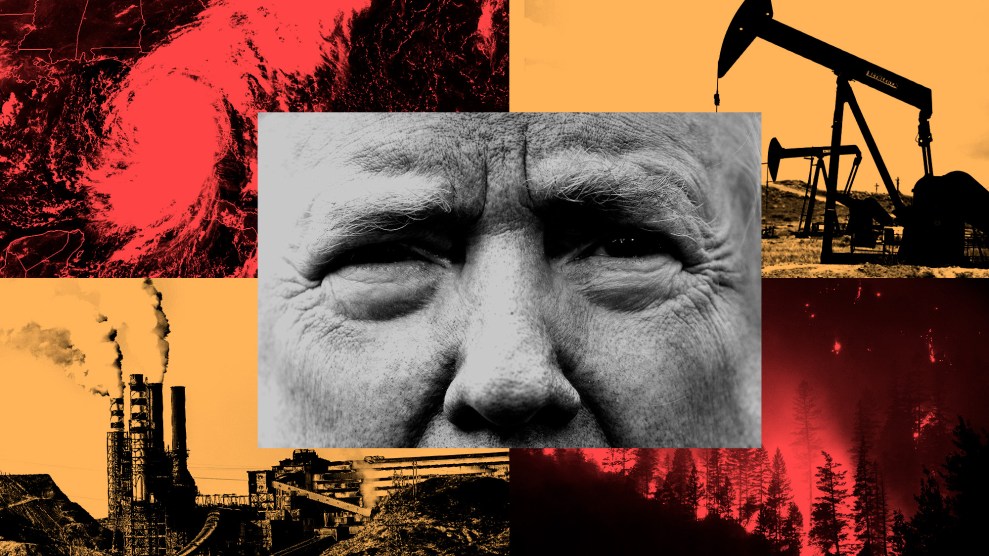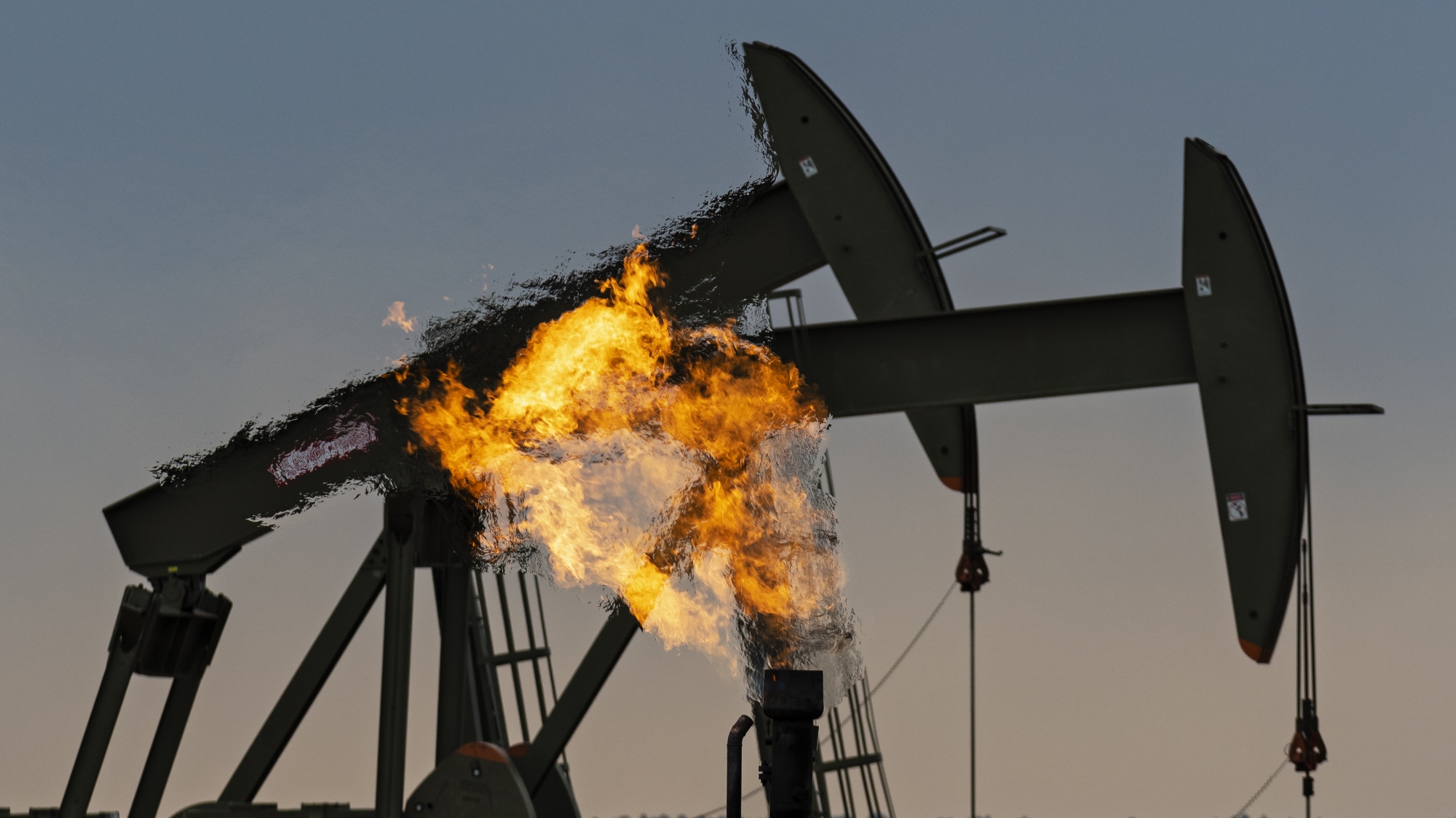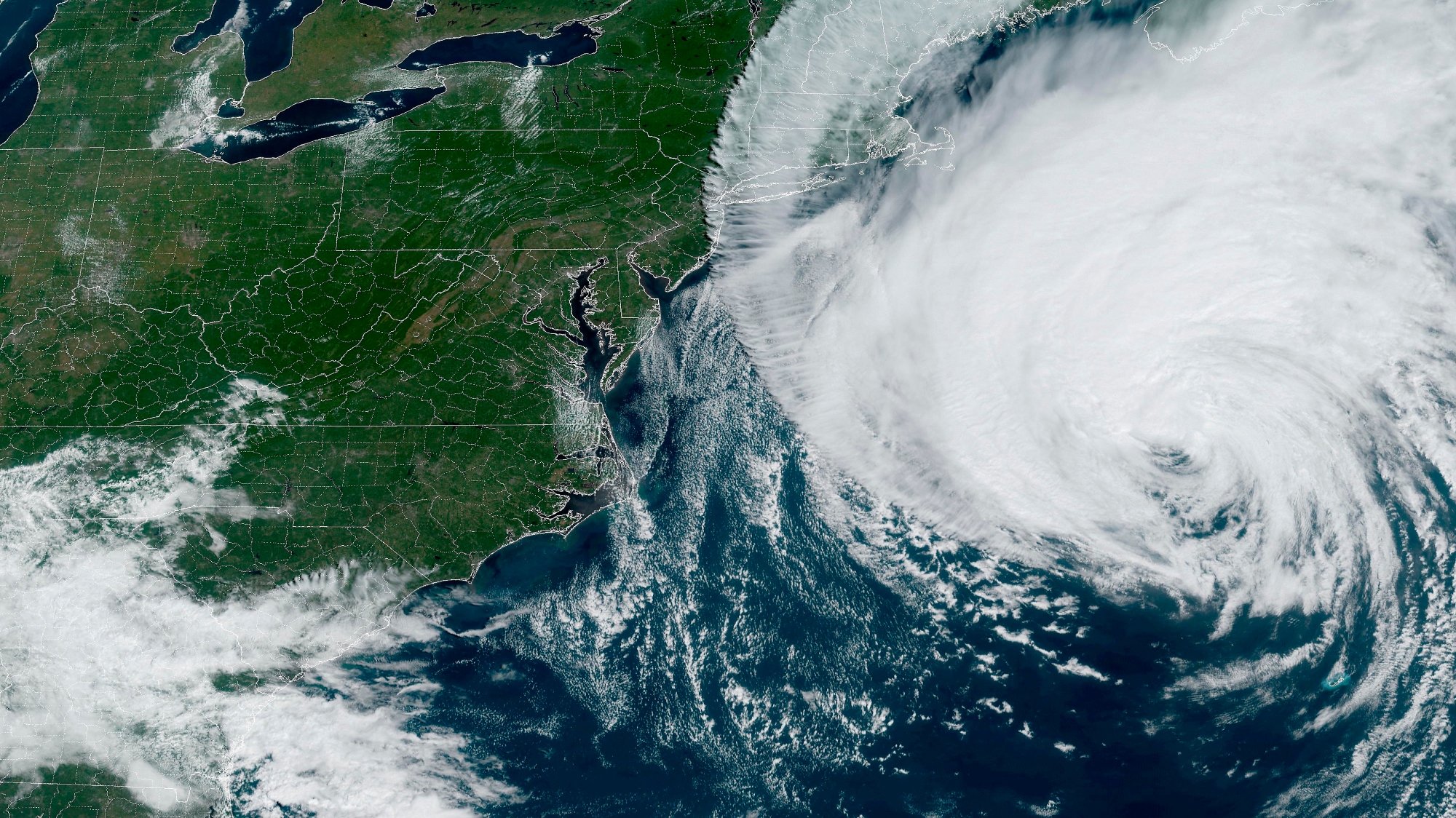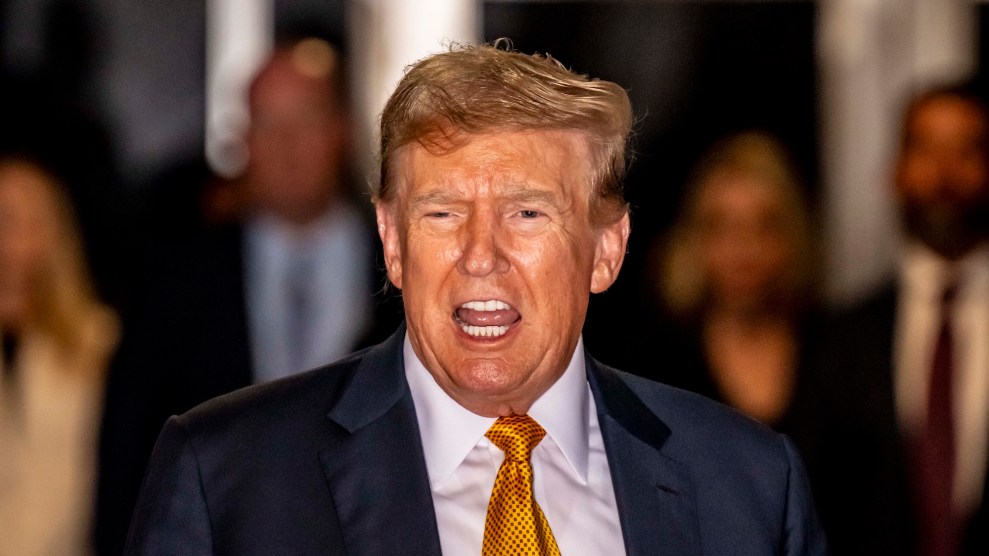
Mother Jones illustration; Patrick Semansky/AP; Unsplash
This story was originally published by the Guardian and is reproduced here as part of the Climate Desk collaboration.
Here is the biggest thing happening on our planet as we head into the autumn of 2024: The Earth is continuing to heat dramatically. Scientists have said that there’s a better than 90 percent chance that this year will top 2023 as the warmest ever recorded. And paleoclimatologists were pretty sure last year was the hottest in the last 125,000 years. The result is an almost-clichéd run of disasters: Open Twitter/X anytime for pictures of floods pushing cars through streets somewhere. It is starting to make life on this planet very difficult, and in some places impossible. And it’s on target to get far, far worse.
Here’s the second-biggest thing happening on our planet right now: Finally, finally, renewable energy, mostly from the sun and wind, seems to be reaching some sort of takeoff point. By some calculations, we’re now putting up a nuclear plant’s worth of solar panels every day. In California, there are now enough solar farms and wind turbines that day after day this spring and summer they supplied more than 100 percent of the state’s electric needs for long stretches; there are now enough batteries on the grid that they become the biggest source of power after dark. In China it looks as if carbon emissions may have peaked—they’re six years ahead of schedule on the effort to build out renewables.
And here’s the third biggest thing in the months ahead: the American presidential election, which looks as if it is going down to the wire—and which may have the power to determine how high the temperature goes and how fast we turn to clean power.
Donald Trump gave an interview last week, in which he laid out his understanding of climate change:
You know, when I hear these poor fools talking about global warming. They don’t call it that any more, they call it climate change because you know, some parts of the planet are cooling and warming, and it didn’t work. So they finally got it right, they just call it climate change. They used to call it global warming. You know, years ago they used to call it global cooling. In the 1920s they thought the planet was going to freeze. Now they think the planet’s going to burn up. And we’re still waiting for the 12 years. You know we’re down almost to the end of the 12-year period, you understand that, where these lunatics that know nothing, they weren’t even good students at school, they didn’t even study it, they predict, they said we have 12 years to live. And people didn’t have babies because they said—it’s so crazy. But the problem isn’t the fact that the oceans in 500 years will raise a quarter of an inch, the problem is nuclear weapons. It’s nuclear warming…These poor fools talk about global warming all the time, you know the planet’s going to global warm to a point where the oceans will rise an eighth of an inch in 355 years, you know, they have no idea what’s going to happen. It’s weather.
I’ve quoted this at length because this could again be the most important man on the planet, talking about the most important issue the planet has ever faced. And he’s gotten every word of it wrong. It’s gibberish.
But it’s gibberish in the service of something very important and very dangerous: doing all that he can to block the energy transition, in America and around the world. His friends at Project 2025 have laid out in considerable detail how you translate that gibberish into policy. It lays out in loving detail many of the steps his administration would use to bolster oil, gas, and coal while sidetracking sun and wind. These include ending the effort to spur EV production in Detroit; ending support for renewables (Trump has promised to “kill wind,” whatever that means); and reversing a crucial 2009 finding from the EPA that carbon dioxide causes harm, a position that undergirds much of the federal effort to rein in climate pollution.
He has also—chef’s kiss—promised to close down the National Oceanic and Atmospheric Administration, otherwise known as the people who measure how much the temperature is rising. That’s on the grounds that those measurements are “one of the main drivers of the climate change alarm industry.”

In return for this endless largesse (beginning on day one, Trump said, he would become a dictator in order to “drill, baby, drill”), he has asked the industry for only (Austin Powers moment here) “one billion dollars” in campaign contributions. Big Oil is doing its best. As the Washington Post reported a couple of weeks ago, Harold Hamm, one of the country’s most prominent frackers, is working the phones to come up with as much cash as possible. Hamm is working “incredibly hard to raise as much money as he can from the energy sector,” said a Trump campaign aide. “We’ve gotten max-out checks from people we’ve never gotten a dollar from before.”
Can Trump reverse the tide towards renewable energy? No, not entirely—it’s too strong, based on the ever-falling cost of sun, wind and batteries. Even in Texas, HQ of the hydrocarbon cartel where the state legislature has tried to pass laws limiting renewables, the undeniable economics of clean power continue to surge. The Lone Star state is now leading the nation in installing batteries on its grid, a good thing given the ongoing spate of climate disasters that strain and stress the state’s system.

But he can slow it down considerably. America’s buildout of renewables is dependent, among other things, on overcoming the bewildering array of permitting requirements that make every transmission line a harrowing bureaucratic battle. At the moment, the Biden-Harris White House has a dedicated team at work, with senior officials assigned to senior projects, constantly bird-dogging them to make sure that they get built on schedule. That would disappear, replaced with a new set of bureaucrats deeply invested in making sure these projects didn’t happen.
If a Trump administration was merely going to be a four-year interregnum, it would be annoying. But it comes at precisely the moment when we need, desperately, acceleration.
At least as bad would be the effect around the world. Last time, Trump withdrew America from the Paris climate accords, badly denting the momentum those talks had produced. This time he’d do the same and more—he’s promised, for instance, to end Biden’s pause on liquefied natural gas export terminals. These are designed to take huge volumes of US gas and ship it to Asia, where it will undercut the move to renewables. It is the last real growth strategy the oil industry has, and it is the biggest greenhouse gas bomb on the planet.
In essence, Trump would give every other oligarch in the world—Vladimir Putin, the king of Saudi Arabia, and on down the list—license to keep pumping away. If the biggest historical emitter of greenhouse gases is not going to play a role, why should anyone else feel any pressure? As Project 2025 quite clearly declares, Trump would “rescind all climate policies from its foreign aid programs” and “cease its war on fossil fuels in the developing world.” (Though Trump has claimed not to know anything about Project 2025.) The global climate talks in Brazil next year and the 2026 version in Australia—currently shaping up to be the last huge chance for global cooperation—would be turned on their heads.
There are ways to calculate the meaning of all this. The UK-based NGO Carbon Brief, for instance, said earlier this year that “a victory for Donald Trump in November’s presidential election could lead to an additional 4 billion metric tons of US emissions by 2030 compared with Joe Biden’s plans.” Just for perspective, that’s a lot: “This extra 4 billion tonnes of carbon dioxide equivalent (GtCO2e) by 2030 would cause global climate damages worth more than $900 billion, based on the latest US government valuations. For context, 4 GtCO2e is equivalent to the combined annual emissions of the EU and Japan, or the combined annual total of the world’s 140 lowest-emitting countries.” It’s like finding an extra continent full of greenhouse gases.
But worse than the totals is the timing. If a Trump administration was merely going to be a four-year interregnum, it would be annoying. But in fact it comes at precisely the moment when we need, desperately, acceleration. We’re on the edge of breaking the planet’s climate system—we can see it cracking in the poles (the Thwaites glacier now undermined by warm seawater), in the Atlantic (the great currents now starting to slow), and in the Amazon (where savannafication seems to be gathering speed). The earth’s hydrological system—how water moves around the Earth—has already gone kaflooey, as warm air holds far more water vapor than cold.
The world’s climate scientists have done their best to set out a timetable: Cut emissions in half by 2030 or see the possibilities of anything like the Paris pathway, holding temperature increases to about 2.7 degrees above preindustrial levels, disappear. That cut is on the bleeding edge of the technically possible, but only if everyone is acting in good faith. And the next presidential term will end in January 2029, which is 11 months before 2030.
If we elect Donald Trump, we may feel the effects not for years, and not for a generation. We may read our mistake in the geological record a million years hence. This one really counts.













